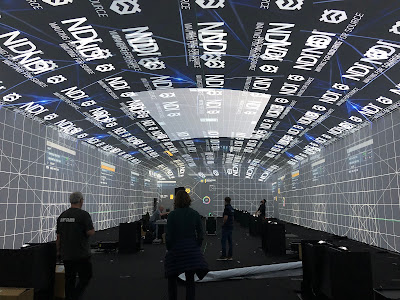Immersive theater, with its unique blend of entertainment, education, and historical context, has the potential to captivate audiences and draw visitors to entertainment venues. Depending of the content and it's an attraction that draws education groups, adults parents with preschool children, and tourists. Let's explore why this innovative form of theater is gaining popularity and how it can benefit both audiences and venues.
What is Immersive Theatre?
Immersive theatre places the audience within the show, transforming them from passive observers to active participants. Unlike traditional theater, where spectators sit in rows and watch from a distance, immersive theater invites engagement. Here are some key characteristics of immersive theater:
1. Non-Traditional Physical Environment: Immersive shows often forgo raised stages and curtains. Instead, they create unique environments that encourage interaction.
2. Stimulation of All Senses: Beyond vision and hearing, immersive experiences can engage touch, taste, and smell.
3. Unique Experiences: Audiences leave feeling that they were part of something special rather than just part of a crowd.
4. Social Interaction: Talking during the show is encouraged, blurring the line between audience and performer.
Sistine Chapel Exhibition Krakow
Why Immersive Theatre Matters
1. Education and Historical Context: Immersive experience theatre can transport audiences to different time periods, historical events, or cultural contexts. By experiencing history firsthand, viewers gain a deeper understanding of the past.
2. Emotional Connection: Immersive shows allow audiences to empathize with characters and historical figures. This emotional connection enhances the learning experience.
3. Memorable Experiences: Visitors remember immersive shows long after they've left the venue. Word-of-mouth recommendations drive more people to attend.
4. Appealing to Diverse Audiences: Immersive theatre attracts a wide range of people, including those who might not typically attend traditional plays. Families, students, and tourists all find value in these experiences.
5. Collaboration with Museums and Historic Sites: Immersive theatre can complement museum exhibits and historic sites. It provides a dynamic way to engage visitors and bring history to life.
Where It's Going
Despite pandemic-related setbacks, immersive experiences are making a comeback. New venues, business models, and creative ideas are emerging. Casinos, hotels, retail stores, and even stadiums are exploring immersive options. Additionally, bridging the physical-digital divide allows people to experience elements of immersive theatre from the comfort of their homes. However most such installations are custom made with consent in very unusual format. Also the process of designing it is also complicated and time consuming.
Alternative could be THE CUBE immersive theater which is unified immersive theater format, made by ARAM company who can build immersive theater within 3 months and provide full turn-key solution for any kind of venues. It also have a library of various stories or they can create the custom one. This is very good option if you want to have a immersive theater in your venue but don't want to develop a custom format.
In conclusion, immersive theatre offers a powerful blend of entertainment, education, and historical context. By creating memorable experiences, it draws visitors to entertainment venues and enriches their understanding of the world around them.
Remember, the magic of immersive theatre lies in its ability to transport us beyond the ordinary and immerse us in extraordinary stories and settings.

















